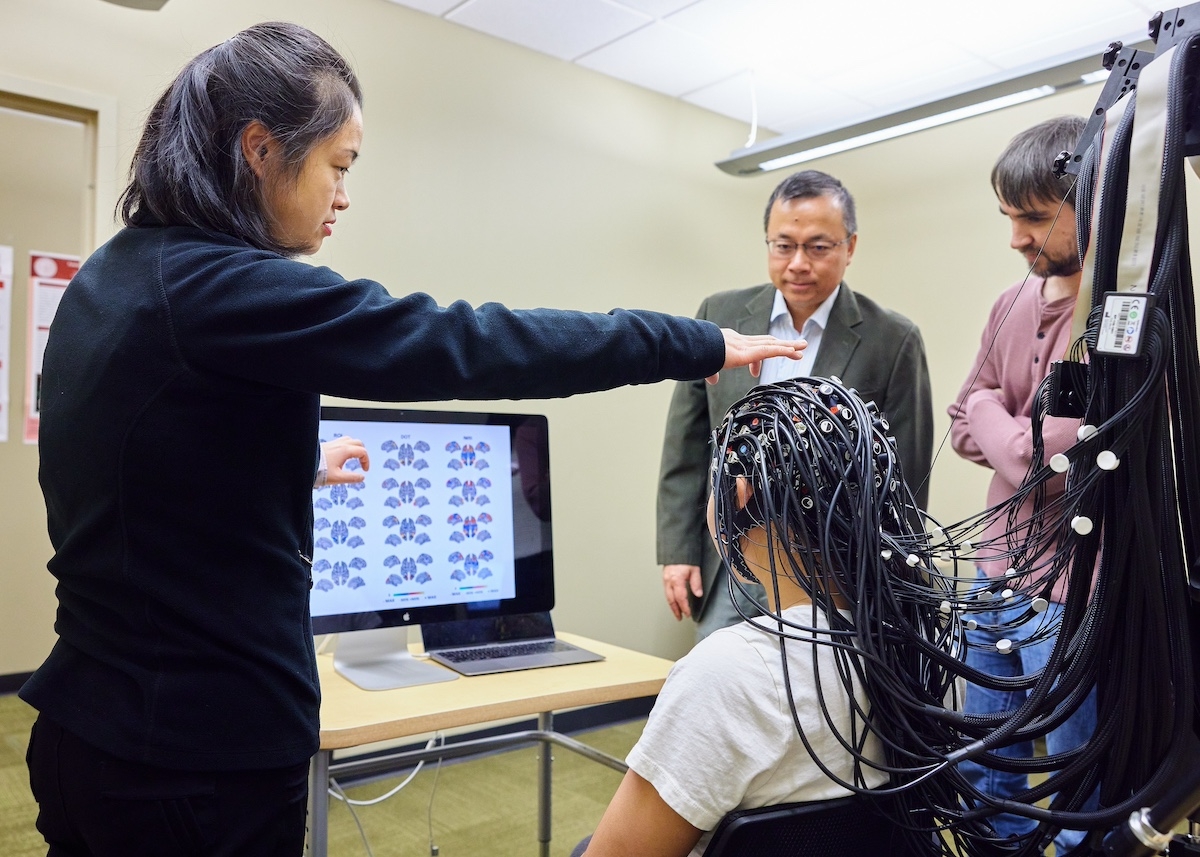
NORMAN, OKLA. – Traumatic stress, particularly in military personnel, can lead to severe consequences such as mental illness, substance abuse, PTSD, family violence and suicide. Addressing suicide prevention and improving treatment methods are top priorities for the Department of Defense.
University of Oklahoma biomedical engineering professors Han Yuan, Ph.D., and Lei Ding, Ph.D., are at the forefront of this effort and are part of an interdisciplinary team awarded a $12 million grant from the Defense Advanced Research Projects Agency (DARPA) of the Department of Defense. Collaborating with engineers, neuroscientists and clinicians from Columbia University, the Medical University of South Carolina and the University of Wisconsin-Madison, they aim to enhance brain stimulation techniques for treatment-resistant depression.
The researchers’ recent work showed promising results by synchronizing brainwaves using repetitive transcranial magnetic stimulation (TMS) triggered by electroencephalography (EEG), improving treatment outcomes for mental health conditions. The DARPA-funded project, part of the STRENGTHEN program, targets suicide prevention in challenging clinical populations.
The team aims to promote cognitive flexibility and emotional regulation, crucial for overcoming depression and trauma, says Yuan, an associate professor in the Stephenson School of Biomedical Engineering at OU.
“In our research, we are addressing a new challenge: treating suicidal individuals. Suicidal patients pose greater difficulties than those with depression because suicide is not simply a diagnosis like depression is. People may attempt suicide for various reasons. In our research, as we progress through the stages of the project, we will recruit patients who may have depression, anxiety or both known as comorbid conditions, including post-traumatic stress disorder. Our goal is to develop interventions for this complex clinical population,” Yuan said.
Their approach, enhancing transcranial magnetic stimulation with state-of-the-art brain imaging technology, aims to enhance cognitive flexibility and emotional regulation, potentially transforming mental health treatment when combined with cognitive-behavioral therapy.
Yuan will leverage their findings and build a less expensive and more widely available system based on simultaneous functional near-infrared spectroscopy (fNIRS), EEG and TMS.
If you or someone you know is experiencing suicidal thoughts or a crisis, immediately phone or text 988, the 988 Suicide and Criss Lifeline, or call a mental health professional.
About the University of Oklahoma
Founded in 1890, the University of Oklahoma is a public research university located in Norman, Oklahoma. As the state’s flagship university, OU serves the educational, cultural, economic and health care needs of the state, region and nation. OU was named the state’s highest-ranking university in U.S. News & World Report’s most recent Best Colleges list. For more information about the university, visit ou.edu.